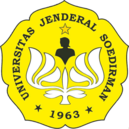Moral Values of Rahwana’s Figure in Rahwana Putih Novel by Sri Teddy Rusdy
Abstract
Rahwana Putih, a novel by Sri Teddy Rusdy, reveals the figure of Rahwana with good characters and behaviours. The characters appeared contain moral values that can be considered as a role model. This phenomena is interesting to be explored deeply because, here, Rahwana is presented differently from its stereotype in all puppet stories. Based on this research background, this study aims to analyze moral values contained in Rahwana Putih by Sri Teddy Rusdy. Structuralism approach is used to analyze the moral values on Rahwana figure which emphasizes on intrinsic elements of fiction works. The MacIntyre’s theory of morality that cores on truthfulness and trust, justice, and courage is also applied to observe these values. The method used in this study is analytical descriptive and it consists of primary and secondary data sources. The primary data source is Rahwana Putih by Sri Teddy Rusdy, while the secondary data sources are journals and references which are relevant to the research problem. The techniques for collecting data comprise reading, classifying, reducing and describing data. The technique used to analyze the data is content analysis. The results show that the moral values appeared in Rahwana’s characters embrace honesty, trust, justice and courage are the manifestation of Javanese leadership concept called astabrata.
References
Clark, M. (2001). “Shadow Boxing: Indonesian Writers and the Ramayana in the New Order”. Source: Indonesia, No. 72 (Oct., 2001), pp. 159-187 Published by: Cornell University Press; Southeast Asia Program Publications at
Cornell University Stable URL: https://www.jstor.org/stable/3351485 Accessed: 26-12-2019 17:16 UTC.
Dermawan, T. (2018). “Tokoh Wayang dalam Layar Puisi Indonesia: Pergulatan Mitos dan Kontra Mitos”. Kongres Bahasa Indonesia IX. http://repositori.kemdikbud.go.id/9986/1/dokumen_makalah_1540470171.pdf
Endraswara, S. (2008). Metodologi Penelitian Sastra. Yogyakarta: MedPress.
Endraswara, S. (2013). Falsafah Kepemimpinan Jawa. Yogyakarta: Narasi.
Fudin, S. (2014). “Teori Dekonstruksi dan Penerapannya. https://www.academia.edu/19224832/TEORI_DEKONSTRUKSI_DAN_PENERAPANNYA
Haerudin, D. (2010). “Mengkaji Nilai-Nilai Moral Melalui Karya Sastra”. Pernah dimuat di Jurnal Pendidikan Bahasa dan Seni FPBS UPI. https://www.scribd.com/doc/42242964/Mengkaji-Nilai-Moral-Melalui-Karya-Sastra.
Jarwati. (2015). “Dekonstruksi Tokoh-Tokoh Wayang dalam Novel Rahwana Putih Karya Sri Teddy Rusdy”. Tesis. Universitas Airlangga. http://lib.unair.ac.id
Kamalia, M. F. J., Wildayati. (2019). “The Social Messanger in The Ramayana: Perspektif on Literary Theory”. Jurnal Suluk, Volume 1, Nomor 1, Maret 2019. www.jurnalfum.uinsby.ac.id.
Kayam, U. (2001). Kelir Tanpa Batas. Yogyakarta: Pusat Studi Kebudayaan UGM.
Law, F. H. (1940). “The Moral Values of Literature”. The English Journal, Vol. 29, No. 2 (Feb., 1940), pp. 115-123 Published by: National Council of Teachers of English Stable URL: https://www.jstor.org/stable/805506.
MacIntryre, A. (1984). After Virtue: A Study in Moral Theory, Second Edition, Notre Dame: University of Notre Dame Press.
Moleong, L. (2007). Metode Penelitian Kualitatif. Bandung: Rosdakarya.
Nurgiyantoro, B. (1998). Transformasi Unsur Pewayangan dalam Fiksi Indonesia. Yogyakarta: Gadjah Mada University Press.
Nurgiyantoro, B. (2012). Teori Pengkajian Fiksi. Yogyakarta: Gadjah Mada University Press.
Ramanudjan, A. K. (1991). “Three Hundred Ramayana: Five Examples and Three Thoughts on Translation”. Many Ramayanas The Diversity of A Narrative Tradition in South Asia. California: University of California Press.
Rusdy, S. T. (2013). Rahwana Putih. Jakarta: Yayasan Kertagama.
Sattar, A. (2018). Valmiki’s Ramayana. United Kingdom: First Rowman & Little Field Edition.
Senawangi. (1999). Ensiklopedia Wayang Indonesia. Jakarta: PT. Sakanindo Printama.
Stanton, R. (1965). An Introduction to Fiction. New York: Holt,Rinehart and Winston.
Wedhowati, S. (2014). “Is The Ramayana a Work of World Literature? The History, Translation, Anthologization, Circulation, Distribution, and Production of The Ramayana”. Journal of Language and Literature. Vol. 14 No.2, October. Universitas Sanata Darma. http:/e-journal.usd.ac.id/index.php/joll/article/download/377/324.
Wellek, R & Warren, A. (2016). Teori Kesusasteraan. Melani Budianta (Penerjemah). Jakarta: Gramedia.
Wiyatmi. (1993). “Peran Sastra sebagai Ekologi Budaya terhadap Cipta Sastra Sejumlah Sastrawan Indonesia Modern”. Jurnal Diksi 22 (1) hal 13-20. https://journal.uny.ac.id/index.php/diksi/article/view/7040/6071
Authors who publish with Jurnal Ilmiah Lingua Idea agree to the following terms:
- Authors retain copyright and grant the journal right of first publication with the work simultaneously licensed under a Creative Commons Attribution License (CC BY-SA 4.0) that allows others to share the work with an acknowledgment of the work's authorship and initial publication in this journal.
- Authors are able to enter into separate, additional contractual arrangements for the non-exclusive distribution of the journal's published version of the work (e.g., post it to an institutional repository or publish it in a book), with an acknowledgment of its initial publication in this journal.
- Authors are permitted and encouraged to post their work online (e.g., in institutional repositories or on their website) prior to and during the submission process, as it can lead to productive exchanges, as well as earlier and greater citation of published work.





















.png)






